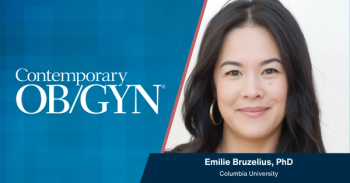Early home visits from nurses may reduce chronic disease risk among pregnant female patients and female offspring, according to a recent study published in JAMA Network Open.
Takeaways
- The study suggests that early home visits by nurses, specifically through programs like the Nurse-Family Partnership (NFP), significantly reduce the risks of obesity and hypertension among both mothers and their offspring.
- The research highlights the association between poverty and adverse childhood experiences (ACEs) with increased health risks, especially obesity in female children and adolescents, and hypertensive disorders in adults.
- The study emphasizes significant health disparities among female and Black individuals, underscoring the importance of addressing outcomes within these populations to improve overall health outcomes.
- Data indicates increased positive effects of the Nurse-Family Partnership program, particularly among families facing increased adversity. This suggests that targeted interventions can be beneficial for those at higher sociodemographic risk.
- The investigators conclude that the Nurse-Family Partnership can make cost-saving contributions to physical health. This implies that early nurse visits not only have positive health outcomes but also have the potential to contribute to long-term cost savings in managing health conditions.
Many health risks are significantly increased by poverty and adverse childhood experiences (ACEs). The risk of obesity is increased among female children and adolescent, and hypertensive disorder risk is increased among adults. Female and Black individuals also have significant disparities for these risks, making it vital to address outcomes among these populations.
The Nurse-Family Partnership (NFP) aims to improve pregnancy, child health, and maternal health outcomes through infant and toddler home visits by nurses. Data has indicated increased effects from the program among families facing increased adversity.
To determine the NFP’s impact on obesity and hypertension in offspring aged 12 to 18 years, as well as obesity and blood pressure among mothers, investigators conducted a randomized clinical trial. Participants included pregnant women with no previous live births, at under 29 weeks’ gestation, and with 2 or more sociodemographic risk factors.
Participants were recruited between June 1, 1990, and August 31, 1991, and randomly assigned to receive free transportation for prenatal care, child development screening, and referral alone, or referral augmented with prenatal, infant, and toddler home nurse visits.
Visits occurred in children aged up to 2 years. Self-reported race and ethnicity data was obtained, and 98% of participants were unmarried and 85% lived below the federal poverty level.
During nurse visits, women received guidance about methods for improving diet and exercise, managing adverse conditions, avoiding toxic substance use, coordinating care with physicians, monitoring blood pressure, implementing healthy feeding practices, promoting responsive caregiving, managing infant sleep, and encouraging safe child exploration.
Child height, weight, and blood pressure were measured at child ages 12 and 18. Self-reported weight was accepted in cases with interference in the child being weighed, such as weight over 350 pounds, telephone interview, and incarceration.If a blood pressure reading exceeded normal ranges, measurement was repeated after 10 minutes.
Outcomes included obesity, severe obesity, stage 1 hypertension, and stage 2 hypertension. Health conditions were also reported by mothers at the 18-year interview.
There were 576 offspring evaluated for obesity when aged 12 years and 605 when aged 18 years. For mothers, 563 and 598, respectively, were evaluated. The risks of obesity and severe obesity were significantly reduced among patients receiving nurse visits, with obesity risk reduced by over 50% at age 12 years and over 40% at age 18 years.
Of female offspring who completed interviews at both ages, rates of obesity at both ages were 0.25 and severe obesity 0.12. NFP decreased obesity risk among these individuals by 55% and severe obesity risk by 81% compared to the control group. Female offspring had increased rates of obesity compared to male offspring, at 0.32 and 0.21, respectively, at age 12 years.
Blood pressure was evaluated in 568 offspring when aged 12 years and 596 when aged 18 years. For mothers, 507 and 592, respectively, were evaluated. Stage 1 and stage 2 hypertension were significantly less likely in mothers in the NFP group vs the control group, with risks of stage 1 and stage 2 hypertension reduced by 39% and 79%, respectively.
These results indicated reduced risks of obesity and chronic hypertension from early nurse visits. Investigators concluded NFP can make cost-saving contributions to physical health.
Reference
Conti G, Smith J, Anson E, et al. Early home visits and health outcomes in low-income mothers and offspring: 18-year follow-up of a randomized clinical trial. JAMA Netw Open. 2024;7(1):e2351752. doi:10.1001/jamanetworkopen.2023.51752

















